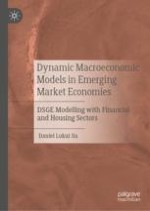2020 | OriginalPaper | Chapter
6. The Basic Model
Author : Daniel Lukui Jia
Published in: Dynamic Macroeconomic Models in Emerging Market Economies
Publisher: Springer Singapore
Activate our intelligent search to find suitable subject content or patents.
Select sections of text to find matching patents with Artificial Intelligence. powered by
Select sections of text to find additional relevant content using AI-assisted search. powered by
